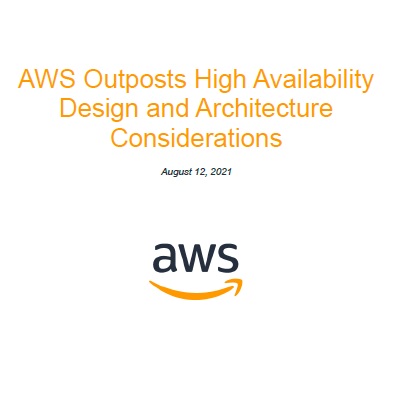
whitePaper | August 12, 2021
This whitepaper discusses architecture considerations and recommended practices that IT managers and system architects can apply to build highly available on-premises application environments with AWS Outposts. This paper is intended for IT managers and system architects looking to deploy, migrate, and operate applications using the AWS cloud platform and run those applications on premises with AWS Outposts. It introduces the architecture patterns, anti-patterns, and recommended practices for building highly available systems that include AWS Outposts. You will learn how to manage your AWS Outposts capacity and use networking and data center facility services to set up highly available AWS Outposts infrastructure solutions. AWS Outposts is a fully managed service that provides a logical pool of cloud compute, storage, and networking capabilities. With Outposts, customers can use supported AWS managed services in their on-premises environments, including: Amazon Elastic Compute Cloud (Amazon EC2), Amazon Elastic Block Store (Amazon EBS), Amazon Simple Storage Service on Outposts (Amazon S3 on Outposts), and other AWS services on Outposts. Services on Outposts are delivered on the same AWS Nitro System used in the AWS Regions. By leveraging AWS Outposts infrastructure solutions, you can build, manage, and scale highly available on-premises applications using familiar AWS cloud services and tools. AWS Outposts is ideal for workloads that require low latency access to on-premises systems, local data processing, data residency, and migration of applications with local system interdependencies.
Read More